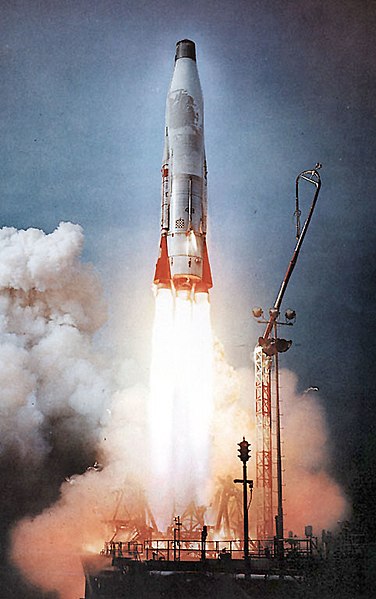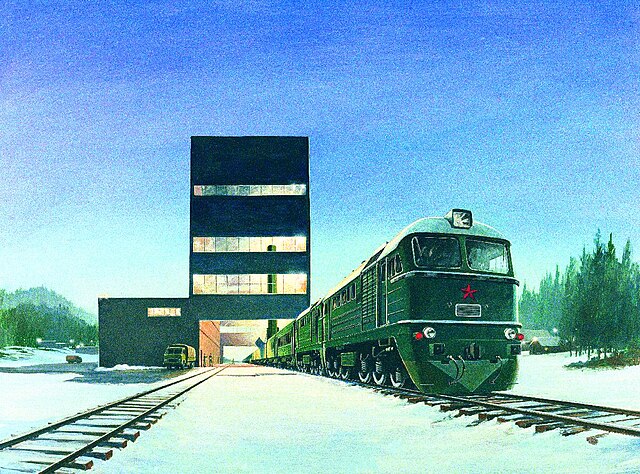The RT-2PM2 «Topol-M» is one of the most recent intercontinental ballistic missiles to be deployed by Russia, and the first to be developed after the dissolution of the Soviet Union. It was developed from the RT-2PM Topol mobile intercontinental ballistic missile.
A Topol-M (in its container) on MZKT-79221 mobile launcher during rehearsals for the 2012 Moscow Victory Day Parade.
Dmitry Medvedev during his visit to a regiment of the Strategic Rocket Forces equipped with Topol-M
Combat Support Vehicle (MOBD) 15V231 of Topol/Topol-M at the Saint-Petersburg Artillery Museum
Troposphere Relay Station R-406VCh of Topol/Topol-M at the Saint-Petersburg Artillery Museum
Intercontinental ballistic missile
An intercontinental ballistic missile (ICBM) is a ballistic missile with a range greater than 5,500 kilometres (3,400 mi), primarily designed for nuclear weapons delivery. Conventional, chemical, and biological weapons can also be delivered with varying effectiveness, but have never been deployed on ICBMs. Most modern designs support multiple independently targetable reentry vehicle (MIRVs), allowing a single missile to carry several warheads, each of which can strike a different target. The United States, Russia, China, France, India, the United Kingdom, Israel, and North Korea are the only countries known to have operational ICBMs.
A US Peacekeeper missile launched from a silo
An SM-65 Atlas, the first US ICBM, first launched in 1957
ICBMs can be deployed from transporter erector launchers (TEL), such as the Russian RT-2PM2 Topol-M
Artist's concept of an SS-24 deployed on railway







